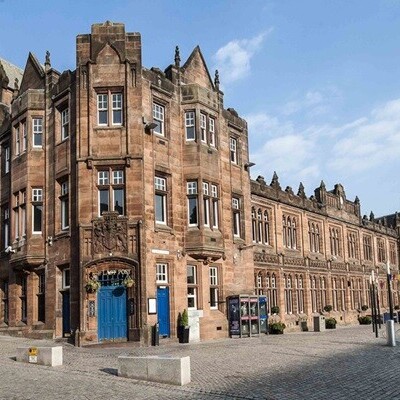
Living in Paisley
Thinking about moving to Paisley? Discover why it's a great place to live, fun things to do here, what the local schools and transport connections are like - and of course the most important thing of all: how much houses cost to buy.
Your guide to moving to Paisley
Why Paisley is a good place to live
Indeed, Paisley is an exquisite part of Scotland that offers a beautiful blend of ancient history and modern conveniences. Nestled in the west central Lowlands, it is situated within easy reach to Glasgow, making it perfect for commuting. Surrounded by rolling countryside, the town boasts a mixture of historical charm and modern amenities. Here, one can experience a rich cultural scene with an array of architectural treasures like Paisley Abbey and Coats Observatory, galleries, award-winning cafes, top-notch golf courses, and vibrant parks. The transport links are accessible, with the fourth busiest station in Scotland, Paisley Gilmour Street, connecting the town effectively. Moreover, Paisley provides an array of schools and educational facilities with the university and college in town.
What’s Paisley famous for?
Paisley is famous for its historical contribution to the textile industry, particularly the iconic Paisley Pattern. This unique design was featured on the Paisley shawls, a fashion staple worn globally by figures such as Queen Victoria and The Beatles. It became a symbol of the town, featured even today on various fabrics and goods. Notable figures like Paolo Nutini, Gerard Butler, and David Tennant were born here, adding to the town's fame. Paisley is also known for Paisley Abey and the significant collection of listed buildings, offering a testament to its rich history and architectural significance.
What's Paisley famous for?
Things to do in Paisley
Paisley is a hub of culture and history, offering a plethora of activities. One can visit various historical sites such as Paisley Abbey, the Paisley Museum and Art Galleries, Coats Observatory, as well as St Mirin's Cathedral. At the Paisley Museum, one can view a noteworthy collection of the iconic Paisley shawls, pattern books, and working looms. The town has beautiful parks like Barshaw Park and Fountain Gardens where one can relax and enjoy the nature. One can also participate in annual events such as the Sma’ Shot Day celebrations, commemorating a historical dispute between weavers and employers. For sports lovers, diving into the local football history could be an exciting activity. Indeed, there's never a dull moment when living in Paisley.
We have used a bespoke generative AI model to help us research and create our area guides. All of our content is reviewed, and edited where needed, by our trusted team of Zoopla content editors.
Average asking prices in Paisley today
We update our average asking prices every day using data from millions of properties for sale.
Properties currently for sale in Paisley
Whether you're looking to buy a family home or a beautiful apartment, we've got you covered.
Offers over
£120,000
- Bedrooms2
- Bathrooms1
- Living rooms1
2 bed terraced house for sale
Saucel Crescent, Paisley PA1Offers over
£75,000
- Bedrooms2
- Bathrooms1
- Living rooms1
2 bed flat for sale
Argyle Street, Paisley, Renfrewshire PA1Offers over
£90,000
- Bedrooms2
- Bathrooms1
- Living rooms1
2 bed flat for sale
East Buchanan Street, Paisley, Renfrewshire PA1Guide price
£35,000
Land for sale
Land At, Mill Lade, Linwood, Renfrewshire PA11Ly PA1
Transport in Paisley
Find the nearest train stations and other transport links in Paisley.
Local connections
- Paisley Gilmour Street
- National Rail
- 0.1 miles / 0.2 km
- Paisley Canal
- National Rail
- 0.4 miles / 0.6 km
- Paisley St James
- National Rail
- 0.8 miles / 1.3 km
- Hawkhead
- National Rail
- 1 miles / 1.6 km
- Hillington West
- National Rail
- 2.2 miles / 3.5 km
- Crookston
- National Rail
- 2.3 miles / 3.7 km
Schools in Paisley
Discover local primary schools, secondary schools and sixth form colleges in Paisley.
Education in Paisley
- Paisley Grammar School
- Castlehead High School
- St Catherine's Primary School
- Williamsburgh Primary School
- St John Ogilvie Primary School
- St Mary's Primary School
Local pubs in Paisley


Keg
Paisley, Renfrewshire, PA1
Last Post
Paisley, Renfrewshire, PA1
Northern Way
Paisley, Renfrewshire, PA1
Gantry
Paisley, Renfrewshire, PA1
Old Swan Inn
Paisley, Renfrewshire, PA1




